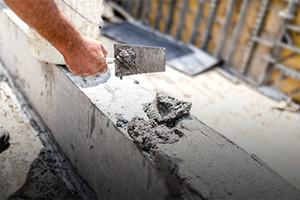Redesigning Concrete
 Concrete — the most widely used, man-made material in the world — requires a huge amount of energy to produce. A random mixture of crushed rock and stones, combined with a cement paste, its strength and durability are also highly variable depending on the internal structure of the components. So researchers are looking at ways to better control concrete’s overall properties while coming up with a recipe that’s more sustainable to produce.
Concrete — the most widely used, man-made material in the world — requires a huge amount of energy to produce. A random mixture of crushed rock and stones, combined with a cement paste, its strength and durability are also highly variable depending on the internal structure of the components. So researchers are looking at ways to better control concrete’s overall properties while coming up with a recipe that’s more sustainable to produce.
Once again taking a lead from nature, the first step was to study what gives some of the most durable natural materials (such as bone, shells, coral, and deep-sea sponges) their strength and how that relates to physical properties. For example, on a microscopic scale, they discovered that the onion-like structure of the silica layers in a deep-sea sponge provided a mechanism for preventing cracks, while the brick-like structure of mother-of-pearl increased toughness.
But translating microscale properties into macroscale structures requires mesoscale thinking, so they developed a framework that allows scientists and engineers to study how particular ingredients will impact the overall properties of concrete. The framework allows data from techniques like electron microscopy and x-ray diffraction, which are used to characterize various materials, to be plugged into a model that would identify the relationships between components to determine the best mix for performance and longevity. The goal is to extend the life of concrete by two or three times, which would be a big step toward improving sustainability.
For information: Oral Buyukozturk, Massachusetts Institute of Technology, 77 Massachusetts Avenue, Cambridge, MA 02139; phone: 617-253-7186; email: obuyuk@mit.edu; Web site: http://web.mit.edu/